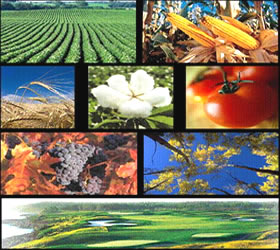 KARACHI : Fruit blemishes in Pakistani Kinnow are one of the main causes impeding its exports, particularly to European Union (EU) markets. According to a study conducted by Muhammad Iqbal, Chief Operating Officer, Muhammad Sohail Mazhar Warraich and Sohail Ayyaz of Pakistan Horticulture Development and Export Company (PHDEC), cosmetic look of the fruit is a very important factor affecting consumer choice in the market. Attractive, blemish-free fruits are desired by the consumer.Citrus, the premier fruit crop, is grown in more than 100 countries of the world across the six continents with annual production of 105 million tons. Brazil is the largest citrus producer (20 percent share), followed by USA (14 percent share), and China (12 percent share).
KARACHI : Fruit blemishes in Pakistani Kinnow are one of the main causes impeding its exports, particularly to European Union (EU) markets. According to a study conducted by Muhammad Iqbal, Chief Operating Officer, Muhammad Sohail Mazhar Warraich and Sohail Ayyaz of Pakistan Horticulture Development and Export Company (PHDEC), cosmetic look of the fruit is a very important factor affecting consumer choice in the market. Attractive, blemish-free fruits are desired by the consumer.Citrus, the premier fruit crop, is grown in more than 100 countries of the world across the six continents with annual production of 105 million tons. Brazil is the largest citrus producer (20 percent share), followed by USA (14 percent share), and China (12 percent share).
Pakistan ranks 13th eminent citrus producer in the world, with an area of 185,000 hectares, producing 1.7 million tons of citrus, and exporting 200,000 tons annually worth $30 million. Major citrus export markets for Pakistan are Russian Federation, Middle East, Iran, Afghanistan, China and Indonesia.Unfortunately, Pakistani kinnow has no access to the ‘supermarkets’ of Europe and other advanced countries due to high quality standards. Pakistani kinnow is fetching very low prices ($205/ton) as compared to other countries like Spain and Morocco ($600/ton). One of the main reasons of this huge difference in the price is the presence of fruit blemishes on the peel of Pakistani kinnow. Morphologically, the blemishes are ‘collapsed hypodermis tissues’ related to shrunken or destroyed oil glands.
Kinnow is the major fruit, sharing about 70 percent of the domestic citrus production and capturing 59 percent of total citrus area of the country. Punjab has dominant share in total citrus (especially kinnow) production. Major citrus producing areas include Sargodha,. Toba Tek Singh,Vehari, Khanewal and Multan. Most of the kinnow production and processing industry falls in district Sargodha.The study says that there is need to explore the factors which are responsible for variable fruit quality in other citrus growing districts as compared to Sargodha so that the export base could be broadened to earn foreign exchange through export enhancement.Until now, very little is known about the fruit blemishes in kinnow in Pakistan. Preliminary studies have recorded various abiotic (wind, peel splitting, nutritional imbalance, physical damage, sunburn, oleocellosis, aeriole, etc) and biotic factors, including insects (red scale, peel miner, fruit fly and others), diseases (fungal, citrus canker, greening, etc) and micro-organisms involved in causing fruit blemishes in kinnow.
Studies have helped explore the nature and extent of fruit blemishes with reference to the position of fruit in tree canopy. Statistics of fruit collected from top, central, and bottom canopy showed that the major cause of fruit blemish in kinnow is the wind, followed by peel miners, scales, fungi and the citrus canker.The blemishes of different kinds were distinguished on observational basis and the data was statistically analysed to comprehend the results. The wind-born blemishes were maximum in small farms and at the top location of the canopy, lesser in medium sized farms and central location of the canopy and least in large farms and bottom location of the canopy. Red scales were maximum in bottom location of the canopy, followed by central and top locations, and peel miner was highest in small orchards, followed by medium and large orchards. The incidence of blemishes, caused by fungus was maximum in bottom portion of the canopy, followed by central and top portions, and the citrus canker was maximum in large orchards, followed by medium and small orchards.
A similar study was conducted to relate the nature and extent of fruit blemishes with orchard management practices. Three levels of orchard management; small (less than five acres), medium (five to 25 acres) and large (more than 25 acres) were addressed and it was recorded that maximum fruit blemish percentage was caused in the small sized orchards, and the factor having major contribution in causing the fruit blemish was the wind.It is also evident that wind is the only major abiotic factor which causes fruit blemishes in the farms of all sizes, with varying significance. Among insects, the peel miner, and among diseases the fungal diseases are the major sources of fruit blemishes in kinnow. The fruit was then taken from orchard to three pack houses in Bhalwal, where the nature and extent of fruit blemishes was recorded at entry point to check the ratio of rejection at orchard level and again at exit point to determine the ratio of rejection at packing shed. It was observed that there was no significance in the orchard sizes, from where the fruit was coming. It means that the blemished fruit comes from all orchards, with varying degrees of fruit blemishes, caused by different factors. The rejection at the pack house was mainly based on diseased fruits. All other minor defects are categorised into different grades of quality, catering different market segments.
Only a small percentage of fruit falls in extraordinary grade of fruit quality, and hence is not destined to the highly competitive, but high returning, international markets. In order to avoid current economic losses, cosmetic appearance of Pakistani fruit needs to be improved. For this purpose, there is need to resort to technical knowledge, proper production practices, and post-harvest handling and storage techniques.Currently, a larger study is already under progress at the University of Agriculture, Faisalabad, in which, monitoring of the whole crop cycle will be documented in association with the biotic and abiotic factors involved in causing fruit blemishes. The study would provide detailed information of insect pest history and initiation and growth of fruit blemishes throughout the crop cycle. Further, the study would help in devising the techniques of managing the problem of fruit blemishes at lowest possible level by adoption of advanced production technology, use of proper plant protection measures (insecticides, fungicides and weedicides), and use of wind breaks, etc.
It would help the country in improving the external quality of the fruit as well as the internal fruit quality. The improved fruit would be able to compete with the fruit from other producers in the international markets, and would earn more foreign exchange. PHDEC has also submitted a research and development project on ‘Kinnow Rind Blemishes Management’ to its parent ministry. The program would include a chain of experiments to evaluate the quality determinants in different kinnow growing district, improve the cosmetic quality of kinnow fruit, and dissemination of research outcomes among the industry stakeholders so that the country could be able to enhance exports of better quality kinnow fruit. – Brecorder











